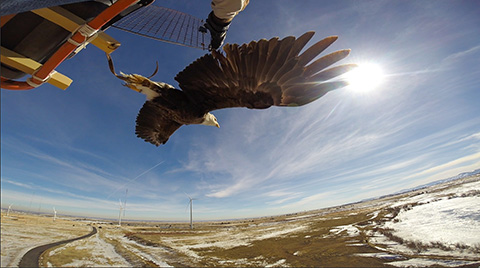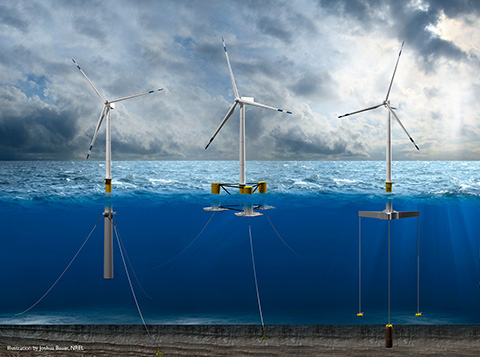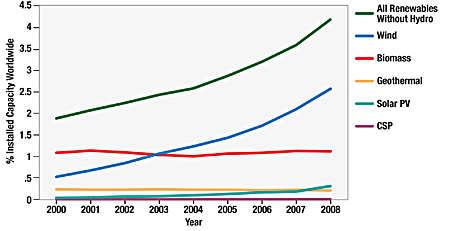Subject Index - Publication Formatting
- 508 compliance
- abstracts
- acknowledgments
- appendices
- author-date citations
- bibliography
- bullets
- captions
- citations
- contents
- executive summary
- figures
- fonts
- footnotes
- foreword
- front matter and back matter
- glossary and nomenclature
- headings and subheadings
- introduction
- lists
- pagination
- photo, image, and video credits
- preface
- references and citations
- report contents
- report covers
- sources
- spaces
- subcaptions
- table of contents
- tables
- title page
508 compliance
As a leading, respected national laboratory, NREL must ensure that its publications and content are accessible to all people. Specifically, we must ensure that everything is “508 compliant.”
What It Means
In 1998, Congress amended the Rehabilitation Act of 1972 to require federal agencies to make their electronic and information technology accessible to people with disabilities. For example, individuals using assistive technology (such as JAWS, a computer screen reader program) can read a document that is 508 compliant.
What It Involves
All graphs, graphics, animations, fact sheets, and so on must be accessible. Further, videos, animations, and audio files must be 508 compliant. These media types require text versions.
Working with a communications representative will ensure that your content goes through the proper process and is 508 compliant before publishing.
**Don’t Forget To Add Alt Text!**
A key part of ensuring 508 compliance involves adding alt text for every figure and photo in technical reports, fact sheets, articles, webpages, social media, and so on. Alt text provides a semantic meaning or description of the image. It can also be read by search engines.
Keep It Simple
Imagine if, instead of reading a document, you had to listen to it being read to you. By keeping this in mind, you can write alt text that is clear and descriptive. To help, see the following examples of alt text—one for a photo and one for an illustration. For more complicated figures or graphs, try to provide a high-level overview of what is being shown (versus describing every detail).

Alt text: Eagle flying out of a cage with wind turbines in the background.

Alt text: Illustration of spar-buoy, barge, and tension-line floating offshore wind turbines in the ocean, with foundations anchoring them to the seabed.
For more information on accessibility and alt text, review NREL’s Communication Standards.
abstracts
An abstract usually accompanies a journal article or conference paper. It is an important indexing and research tool. Abstracts are usually 200 to 250 words in length and the content summarizes and highlights the major points of the journal article, conference paper, or report. It may also include a brief description of the purpose, scope, and methods used to reach the conclusions.
Some journals and conferences ask that you submit an abstract that briefly describes the paper’s purpose and contents before your submission is accepted. Check with the journal or conference sponsor for guidance on abstract requirements such as length.
Abstracts for NREL Publications
The U.S. Department of Energy’s Office of Scientific and Technical Information requires an abstract of 200 words or fewer for its citation record posting. This abstract is also typically included in the metadata of the final publication PDF and should briefly describe the context, purpose, and nature of the work and summarize major results or conclusions.
acknowledgments
You may acknowledge the reviews, funding, and other assistance of individuals and groups in NREL technical reports and papers. Acknowledgments can go in a preface or foreword in a technical report, or they can be on a separate page if they are extensive. They also often follow the main text in professional journal articles. Journals usually contain examples or instructions for authors.
appendices
You can include detailed background or technical information, derivations, equations, or data tables in one or more appendices. Large, detailed tables are often placed in an appendix. If you have more than one appendix, title them with letters (Appendix A, B, C, etc.). If you have only one appendix, title it "Appendix" rather than "Appendix A." Name figures and tables in appendices so they reflect the title (Figure A-1, Table B-2, etc.). In the case of only one appendix, use the “A-1” convention for figures and tables.
author-date citations
This is the preferred style for NREL reports and papers. Do not use a comma between the author's last name and the year: (Smith 2000). See also references.
bibliography
A bibliography, which is different from a reference list, is a list of works that are related to your subject or publication but not cited, either by author or by number, in the text. Alphabetize works in bibliographies according to the last name of the first author. You may use NREL's reference style in listing the works if you don't have other guidelines (e.g., from a journal). Some bibliographies are titled "For Further Reading." Compile your in-text citations of literature and other sources in a list of references.
bullets
Bullets are printed to the left of items in a list. You must have at least two items in a bulleted list.
The following guidelines apply to bulleted lists: The example below shows the ending punctuation rule applied for a multilevel list. In general, think of the punctuation as closing out a “thought,” akin to finishing a sentence. NREL technical reports are divided into:
Report Formatting
In text, the first level of bullet is indented 0.25 in., and text begins at the 0.5-in. mark. This level is bulleted with a solid dot. Second-level bullets are open dots, and third-level bullets are em dashes (—). Each subsequent level of bullet is sequentially indented 0.5 in. In lists with items that are more than one line, each bulleted item is followed by a 6-pt. space.
On the Web
For web content (and for PowerPoint slides and figures), terminal punctuation for a bulleted list is optional when there is no lead-in sentence.Use best judgment and remember that consistency is key. When formatting bullets on the web, there should be a space between the text above the bullets and the first bullet. To facilitate scanning, consider adding a blank line between each bulleted item when the bulleted text is long. Do not use bullets with lists of links.
captions
Each substantive photo and image should be accompanied by a caption. Capitalize the first word in a caption and use lowercase thereafter, except for proper nouns and capitalized abbreviations. You don't need a period at the end of a caption unless there is additional text below the caption such as a figure note or the caption includes multiple complete sentences.
For information about figure captions, see figures.
See also photo, image, and video credits.
citations
See references and citations for guidance on author-date and numbered citations.
contents
See table of contents. For a list of all the content a report may include, see report contents.
executive summary
If you include a summary in a report, place it before the table of contents page. If your report is brief, a summary is not usually necessary. If your report is long, or if you think some readers will want one, you can include an executive summary.
An executive summary can be up to 5% to 10% of the length of your paper. It should be written so that it can be read independently of the full report, as executive summaries are frequently published as a separate document. Its content should include a brief statement of the problem or proposal covered in the report, background information, concise analysis, and the main conclusions. Furthermore, it should be written in plain language, where technical language is defined or examples/further context are provided, making it easy for nontechnical readers to understand.
Figures or tables in the executive summary should be labeled using the format Figure ES-1, Table ES-1.
figures
Figures can include line drawings, graphs, charts, diagrams, schematics, flowcharts, illustrations, and photographs. Be sure that computer-generated figures are clear and readable, so they can be reproduced easily. Make sure the data in your figures correspond to the data in your text and tables.
Number figures in a simple sequence (e.g., Figure 1, Figure 2). In long reports, papers, or book chapters, you may include section or chapter numbers in the figure numbers (e.g., Figure 1-1, Figure 1-2, Figure 2-1, and so on).
Use 10-pt. Arial bold for captions. The caption is centered under the illustration. For data charts and graphs, use 9-pt. Arial for source lines below the figure. See also captions.

Figure 1. Renewables as a percentage of total installed capacity worldwide
No period is needed after a caption if it is an incomplete sentence (see Figure 1 above). If one or more full sentences follow the incomplete sentence (as a continuing caption or subcaption), each caption (including the opening incomplete sentence) should have a period. Don’t bold subcaptions. See Figure 2-1 below for an example.
Inset: The probable energy band diagram.
As required, appropriate credit and Image Gallery information should be provided for figure images. See photo and image credits. Place credit information after the caption.
fonts
Use Times New Roman for the text of NREL technical papers and reports. Use Arial for figures, tables, and headings.
footnotes
You can use footnotes to place detailed explanatory or supplementary information at the bottom of a page; use in-text references to cite others' works. Use superscript numerals for footnote numbering. You can also place explanations, details, contradictions, and examples in the text rather than in footnotes. Footnote numbers are printed outside commas and periods but inside colons, semicolons, and dashes.
We discussed these three stages of writing7: prewriting, writing, and revising.
Mark the footnotes to tables in NREL reports with superscript letters: a, b, c, etc.
foreword
The foreword to a book or formal report contains introductory remarks written, and usually signed, by someone other than the author or authors. Brief introductory remarks written by authors are contained in a preface.
front matter and back matter
NREL reports can include front and back matter in the following order:
Front Matter
- Title page
- Disclaimer
- Foreword
- Preface
- Acknowledgments
- Nomenclature
- Executive summary
- Table of contents
- Lists of figures and tables
Back Matter
Paginate front matter with small Roman numerals (i, ii, iii) rather than Arabic numbers. Count the title page as page i, but don't print the number on it. All technical reports should contain a title page, a disclaimer, and a table of contents. Many outreach publications, such as DOE/NREL program overviews, contain only a contents list and brief acknowledgments in the front matter.
glossary and nomenclature
If you use many mathematical or Greek symbols or technical terms in your report or paper, consider defining them in a glossary or nomenclature. Arrange the list alphabetically, and group Greek letters and definitions alphabetically in a separate list. Nomenclatures are usually in the front of a report, before the contents page. Glossaries usually go in the back, before the references.
headings and subheadings
Here is a standard format for six levels of report subheadings:
First-Level Headings: Arial Bold 18 pt. blue
Second-Level Headings: Arial Bold 14 pt. blue
Third-Level Headings: Arial Bold Italic 12 pt. blue
Fourth-Level Headings: Arial Italic 12 pt. blue
Fifth-Level Headings: Times New Roman Bold 12 pt. black
Sixth-Level Headings: Times New Roman Bold Italic 12 pt. black
Seventh-Level Headings: Times New Roman Italic 12 pt. black
You can number headings and subheadings (e.g., 1.0, 1.1, 1.2, 2.0) if that will help readers with a long report. Print text in 12-point Times New Roman.
introduction
Introductions usually contain background information on the research being reported, the general nature and context of the work, and its results (the "big picture"). Earlier related work can also be described.
lists
You can use bulleted or numbered lists in NREL publications or webpages. Here's an example of a numbered list:
- Include at least two items in a bulleted or numbered list.
- Use numbered lists for procedural steps and for items referred to elsewhere in text (for example, "as described in Step 2").
- Use parallel construction in lists; that is, make all the listed items similar. Use sentences or phrases throughout, and begin each item with a verb or a noun consistently.
- Use lowercase letters to mark subordinate items in your list.
- Make sure you have at least two subordinate items under each main item.
- Indent them like this.
- Use lowercase letters to mark subordinate items in your list.
- Use punctuation in lists when the items are complete sentences; otherwise, place a period after the last item only.
You can also list a few items or procedures in paragraph format and number them (1) one, (2) two, (3) three, etc. See bullets for more formatting information.
On the Web
All of the above guidelines apply to the web. When formatting lists on the web, there should be a blank line between the text above the list and the first item listed. To facilitate scanning, consider adding a blank line between each listed item when the text for each one is long.
pagination
Paginate the front matter of NREL reports with lowercase Roman numerals, up through the lists of figures and tables. The title page is usually page "i," although that number isn't printed on the page. Paginate the main body of your report with Arabic numerals. You may insert a blank page before Page 1 to make sure it will be a right-hand (odd-numbered) page, but don't insert blank pages after that. All subsequent sections can begin on the left or on the right, as they fall. Center the page numbers on each page.
If you include appendices at the end, you may continue to paginate them sequentially with numerals or use A-1, A-2, A-3, B-1, B-2, and so on, for the page numbers.
photo, image, and video credits
If you use a photo, image, or video from the NREL Image Gallery, an NREL staff member, or a paid or external source, you must provide appropriate credit. See the entries on captions and sources for more information, as well as the copyrighted material page on the publishing site.
For Publications
| Accordion Title | Accordion Content |
|---|---|
| Internal Sources | When the photo or image source is an NREL staff member or an NREL contract photographer, use the source's name along with the NREL affiliation. Present the credit in italics, and do not use a period at the end. Use "by" for NREL sources ("from" is for external sources). Illustration by Ray David, NREL Photo by Pat Corkery, NREL If the photo, image, or video is from the Image Gallery, you must also include the image number in the credit. Illustration by Ray David, NREL 12345 Photo by Pat Corkery, NREL 54321 Use the following format if an NREL illustration contains material from an external source. Illustration by Ray David, NREL 19500. Photos from Warren Gretz (NREL 10929) and Iberdola Renewables Inc. (NREL 15185) |
| External Sources | If you use a photo or image from an external source (whether paid or free), use the source's name (if available) and affiliation. If there is an NREL image number, do not replace "NREL" with the source's affiliation; the image number is always an NREL reference. Present the credit in italics, and do not use a period at the end. Use "from" for all external sources (not "by" or "courtesy of"). Photo from John Williams, Western Area Power Administration Illustration from SunPower Corp. Photo from Kathy Boyer, Triangle Clean Cities Coalition, NREL 18520 Photo from Margaret Smith, DOE, NREL 18215 If the photo, image, or video is included in the Image Gallery, you must also include the image number in the credit. Photo from Xcel Energy, NREL 12345 If the photo, image, or video is from Getty Images or a similar source, you must also include the number in the credit. Photo from Getty Images 12345678 |
| Placement in Publications | If a caption is used with the photo or image, the credit should immediately follow it.  NREL analysts develop models, tools, and reports that help provide insight and objective information on renewable energy technologies. Photo by Pat Corkery, NREL 16560 If the photo or image is used for illustrative purposes and does not include a caption, the credit should appear directly beneath the photo.  Photo by Pat Corkery, NREL 16560 For NREL technical reports, use the “NREL_Figure_Caption” style for the caption itself, and then the “NREL_Figure_Note” for the in-text citation or other notes.  Figure 1. Caption text Image from Smith et al. (2022) |
| Additional Guidance | For photo collages, pages with many photos with no captions, or full-page photos, credits can be placed on the same page or a different page, wherever they best fit the design. For document covers, credits can be placed elsewhere in the document (typically inside the front cover). Reference the page containing the photos you are crediting. If images are combined to create new graphics and the original images are still recognizable, the original images must be credited. For example, if two Getty Images photos are merged with NREL photos into a collage and used on a document cover, the credit should read: Cover images, clockwise from bottom: Getty Images 12345, Getty Images 67891, NREL 12345, NREL 67891 |
| Placement in PowerPoint | Microsoft stock images are available through PowerPoint. You may use them in NREL publications, but do not move images out of Microsoft Office for other uses (e.g., a webpage). In general, NREL photos from the Image Gallery are recommended first, Getty Images second, and PowerPoint stock images last. To credit these Microsoft stock images, use: Photo from Microsoft stock images To credit other images used in a PowerPoint presentation, follow the guidance above for publication photo credits, and ensure the credit is listed somewhere on the slide itself (typically the bottom right corner). Do not list the photo credit in the notes section of the slide or at the end of the deck. |
Press Enter to add more content
For the Web
For photos, images, and video on the web, include the credit after the caption and italicize it.
Use "from" for external sources and "by" for NREL sources. Do not use "courtesy of."
Don't include image numbers in the credit. Instead, the photo image file name should include the image number so it can be easily located in the Image Gallery if needed.
preface
Brief introductory remarks and acknowledgments go in the report's preface. The preface comes after the title page and disclaimer page. (See front matter.) A preface written by someone other than the authors of the report is usually called a "foreword."
references and citations
For NREL publications, use the Chicago Manual of Style when you document references and use in-text citations. NREL prefers author-date citations (e.g., Smith et al. 2021) with a full references list at the end of the document, rather than numbered footnotes or endnotes.
Reference formatting can get tedious, but keep in mind that the ultimate goal is to clearly present relevant information so that readers can easily locate the sources used. Do the best that you can with the information you have.
Following are examples of commonly cited publication types:
NREL Technical Report
Last, First, First Last, and First Last. Year. Report Title. Golden, CO: National Renewable Energy Laboratory. NREL/TP-XXXX-XXXX. URL.
Other Technical Reports
Last, First, First Last, and First Last. Year. Report Title. City, State: Publisher. Pub # if available. URL.
Journal Article
Last, First, First Last, and First Last. Year. “Article Title.” Journal Name Volume # (Issue #): Page #. URL or DOI.
Conference Paper/Presentation
Last, First, First Last, and First Last. Year. “Paper Title.” Presented at [conference name/location/dates as available]. [Author organization, location, and publication number if available.] URL or DOI.
Webpage (with authors)
Last, First, First Last, and First Last. Year. “Website Title.” Website name or publisher. Accessed date (e.g., “Accessed January 1, 2021”). URL.
Webpage (no authors)
Website name or publisher. Year. “Website Title.” Accessed date. URL.
News Article (online or in print)
Last, First, First Last, and First Last. Year. “Article Title.” News Outlet. Full publish date or access date if publish date not available. URL if available.
Fact Sheet
Last, First, First Last, and First Last. Year. “Fact Sheet Title.” City, State: Publisher. URL.
Book
Last, First, First Last, and First Last. Year. Book Title. City, State: Publisher.
Book Chapter
Last, First, First Last, and First Last. Year. “Chapter Title.” In Book Title. Edited by First Last (if applicable), page numbers. City, State: Publisher.
Thesis or Dissertation
Last, First. Year. “Title.” Ph.D. dissertation/Master’s thesis, University Name.
Personal Communication
Often, mentioning the person’s name in the text is sufficient (“According to John Smith, CEO of XYZ…).
Last, First. Year. Personal Communication. Title, Organization Affiliation.
Patent
Last First, First Last, and First Last. Year. Patent Title. Patent number (include country code, the word “Patent,” and patent number with retained commas—for example, US Patent 3,597,875), filed [month, day, year], and issued [month, day, year].
Government Documents
For information on how to cite government documents, including bills and resolutions, court decisions, and congressional hearings, see Bowdoin College’s Quick Guide for Government Documents.
Datasets
Guidance for how to cite datasets can be found within individual dataset entries in the NREL Data Catalog.
Datasets external to NREL can be cited like webpages.
In the references list, include up to 10 author names. If there are more than 10 authors, then list the first seven followed by “et al.” For in-text citations, include up to three names (Smith, Johnson, and Cook 2021). If there are more than three authors, list the first author’s name followed by “et al.” (Smith et al. 2021). Note that “et al.” does not need to be italicized.
If there is more than one reference entry with the same first author in a group of four or more authors and the same publication year, use “a,” “b,” etc. after the year to distinguish the references in the in-text citations.
If there is no year for a published work, use “n.d.” (which stands for “no date”) in place of the year.
Place works that you use or recommend for further reading (but do not cite in the text) in a bibliography.
If you are preparing a manuscript for a publisher other than NREL, follow that publisher's preferred reference style. The best place to find this information is on the publisher’s website, typically under an “Information for Authors” section.
See the NREL Library website for information about Zotero and EndNote citation tools.
report contents
Report contents may include (in order):
- A report cover
- A title page
- A disclaimer
- A foreword
- A preface
- Acknowledgments
- A nomenclature, list of abbreviations, or list of acronyms
- An executive summary
- A table of contents
- A list of figures
- A list of tables
- Body text
- A glossary
- references
- A bibliography
- Appendices.
See also front matter and back matter.
report covers
NREL uses standard covers for most technical reports and papers and subcontract reports. Covers contain the laboratory's name, address, and logo as well as an NREL report number and date of publication. You may spell out an author's first name with or without a middle initial or use initials for the first and middle name.
sources
Include the sources of all figures and tables that were originally published by others, especially those outside NREL. If figures or tables come from a copyrighted publication, you may need permission to reproduce them. Add the source at the end of a figure caption or in a note following a table.
Write out the source in full, as in the example, if it is not in your reference list or bibliography. If it is in the reference list, use one of these styles.
Source: Ref. 19. (for numbered references)
spaces
Use only one space between a period and the beginning of the next sentence.
subcaptions
Print captions to figures and photos in a bold font. Subcaptions are supplementary information that follows a period after the main caption. Subcaptions are not printed in bold.
Inset: The probable energy band diagram.
But follow the publisher's guidelines for journal articles and conference papers.
table of contents
A table of contents is required in most technical reports. In NREL reports, the table of contents follows the rest of the front matter. Lists of figures and tables follow the contents page(s). Each main section of the report is listed in the table of contents with the page it begins on; some authors also like to list subsections. Nothing that comes before the table of contents (front matter) is listed, but references, bibliography, and appendices (back matter) are listed. Publications for general audiences probably should include a contents list if the publication is more than 10 pages long.
tables
In small or average-sized tables, place a horizontal line (as wide as the table) under the title, under the column headings, and below the table (between the table and sources or notes, if any). Delete vertical lines and extra horizontal lines. If the table is very large, shading every other line with a light color or inserting horizontal lines every three or four rows can help readers locate data.
Table 1. Photovoltaic Power Production in Three Applications (megawatts) |
| Application | 1986 | 1987 | 1988 | 1989 | 1990 |
| Grid-Connected PV | 0.5 | 0.2 | 0.6 | 0.4 | 0.4 |
| Central Station PV | 3.8 | 4.7 | 5.5 | 5.9 | 6.4 |
| Consumer Products | 0.5 | 0.6 | 0.8 | 2.5 | 2.2 |
Number tables in simple sequence or by section in long reports (Table 1, Table 2 or Table 1-1, Table 1-2, and so on). Center the table title (in title case) over the table (unlike a figure caption, which is sentence case and goes under the figure) and print the title in 10-pt. Arial bold; supplementary material in the title is not in bold. If possible, print tables in Arial, rather than Times New Roman. Define abbreviations in notes to the table if they are not obvious. Table notes are denoted by lowercase superscript letters (a, b, c) rather than footnote numbers or asterisks.
title page
Most NREL technical reports contain a standard title page inside the cover.
Share

